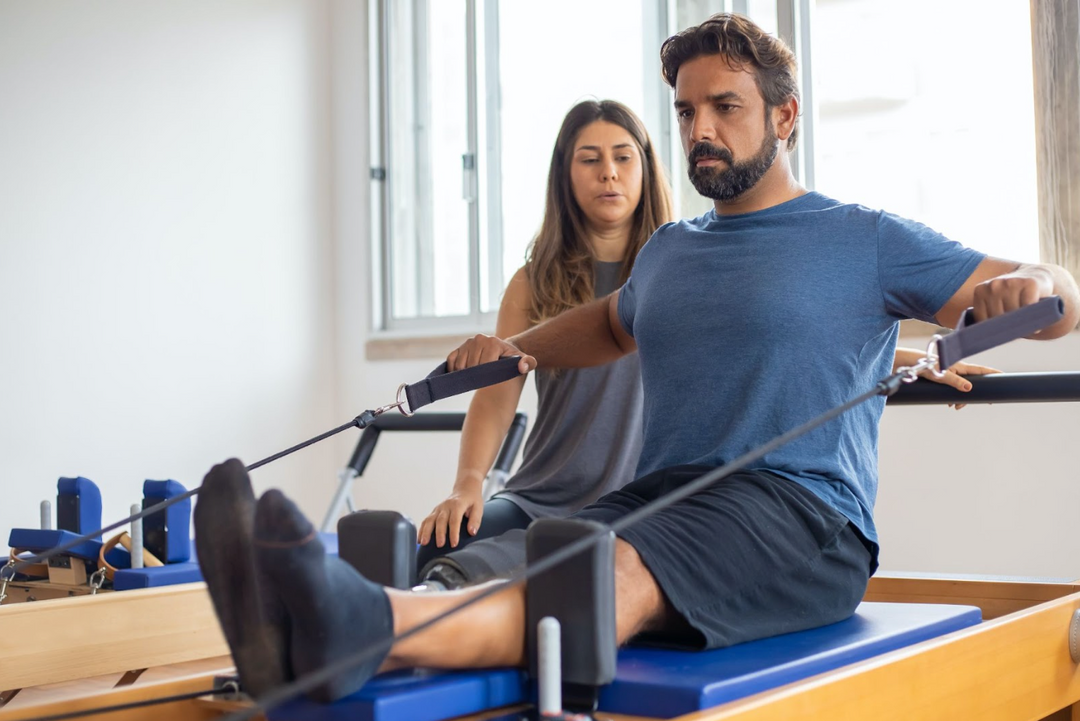
Top 5 Mistakes After Knee Replacement Surgery to Avoid
Itching to learn the top 5 mistakes after knee replacement surgery? If you’re reading this, you’re either getting ready for your knee replacement surgery or in the recovery phase. Either way, we’re sending good vibes in your direction.
After going through a major surgery (yes, a knee replacement is a major life surgery!), you want to do everything right… right? Taking care of yourself is the key to getting back on your feet and running around again.
But there are some common mistakes people make after knee surgery. From neglecting exercise to not using the right supportive knee pillow, we’ve put together the top 5 mistakes after knee replacement surgery you should avoid. Don’t do these five things, and you’ll be back to yourself in no time!
The Top 5 Mistakes After Knee Replacement Surgery
Mistake #1: Neglecting Exercise
According to doctors, the physical therapy exercises you learn after surgery should continue at home for at least two months. Understandably, the recovery process can be challenging and sometimes painful, but it’s crucial to prioritize light physical activity for proper healing.
Regular exercise, such as stretching and light strengthening techniques, is vital to rebuilding strength and flexibility in your knee joint. It helps prevent stiffness, reduces pain, and improves overall function. Don't underestimate the power of movement in regaining your mobility and quality of life post-knee replacement surgery.
Give these light exercises a try:
- Leg raises. Lie flat on your back on a comfortable exercise mat or the floor. Extend your legs fully and place your arms by your sides. Keeping your legs straight and together, slowly lift them off the ground until they are perpendicular to the floor. Then slowly lower your legs back down to the floor. Repeat 10 times or as long as you can without overexerting yourself.
- Stair climbing. Find stairs with steps no more than seven inches high and with a handrail. Start up the stairs leading with your good knee. Once you reach the top, turn around and come back down, leading with your new knee. Do this a few times or until you feel uncomfortable.
Mistake #2: Not Using a Knee Pillow

For optimal healing after knee replacement, doctor’s orders say to sleep on your back with your legs straight. But if you’re a side sleeper, that can seem impossible. In this case, finding a side-sleeping knee pillow that can alleviate pain while still keeping your legs straight for circulation is crucial for recovery.
Find a pillow with features such as a contoured shape and memory foam material for optimal support and comfort. Investing in a high-quality knee pillow will not only help with your pain but also promote better sleep and faster healing.
Give this pillow a try:
- Our Knee Cube Deluxe pillow has a specific cut-out to hold your legs straight–even when sleeping on your side. Better yet, its premium temperature-regulating memory foam keeps your legs from overheating. No need to sacrifice good rest by forcing yourself to sleep on your back after knee replacement.
Mistake #3: Poor Nutrition and Inadequate Hydration

Unfortunately, one widespread mistake people make after knee replacement surgery is neglecting their dietary needs, ultimately hindering healing. Eating healthy and balanced meals is more than essential during this time. And let’s not forget about water. Staying hydrated helps maintain joint lubrication, promotes circulation, and supports the body's natural healing processes. Aim to drink at least eight cups of water daily for optimal healing.
Give these healing foods a try:
- High-quality protein foods such as chicken, fish, eggs, and legumes
- Fruits like oranges, kiwis, grapefruit, and berries
- Vegetables such as spinach, kale, cauliflower, and brussels sprouts
Mistake #4: Wearing Flat Shoes

After knee replacement surgery, taking every step with caution is crucial. One common mistake that people often make is not investing in the right shoes. While flat slip-on shoes are easier to slide on, wearing super flat shoes, such as sandals, can negatively impact your recovery process. Opting for shoes with proper arch support and cushioning will help distribute your body weight evenly and alleviate pressure from the knees: meaning a happier, faster healing you.
Look for shoes with these features:
- Cushion
- Comfort
- Ankle support
- Lightweight
- Flexibility
- Grip
- Arch support
Mistake #5: Not Getting Enough Rest

It's understandable that you may feel eager to resume your regular activities as soon as possible. However, it's essential to strike a balance between staying active and giving yourself time for rest. Overexertion can lead to increased knee pain, swelling, and delayed healing. On top of that, you’re probably just plain uncomfortable, thus, not getting quality sleep.
But rest is vital to your body's ability to heal and regenerate. It allows your muscles, tissues, and bones to repair after surgery. Taking the time to slow down doesn't mean you're lazy or unproductive; it's an essential part of the healing journey. Listen to your body's signals and give yourself permission to rest when needed!
Can’t seem to wind down? Try this:
- Our Sleep Cubezzz supplement gives you back snooze hours through its proprietary restful blend of natural ingredients to activate your body's sleep cycles throughout the night. Magnesium, GABA, melatonin, chamomile, lavender, and more sleep-inducing vitamins and herbs work together to get you some shut-eye.

Avoiding These Top 5 Mistakes After Knee Replacement Surgery
Recovering from a knee replacement surgery can be a challenging journey, to say the least. Avoid these common top 5 mistakes after knee replacement, and you’ll have a smoother and more successful recovery.
Remember to prioritize regular exercise, utilize a helpful knee pillow, maintain a healthy diet, wear supportive shoes, and get enough sleep (even if it means receiving help from a natural supplement). It’s time to regain your mobility and enjoy an improved quality of life. Hang in there; better days are ahead!